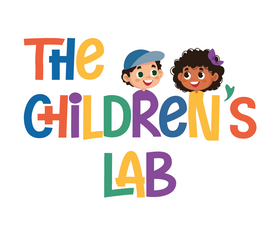
Why Playdough Is Better Than Slime for Kids’ Development
Why Playdough Is Better Than Slime for Kids’ Development
Children naturally love sensory play—it’s colorful, squishy, creative, and endlessly entertaining. Among the most popular options for tactile fun are playdough for kids and slime. Both are enjoyable, but when it comes to child development, playdough clearly takes the lead.
In this blog, we’ll explore why playdough is better than slime, the developmental benefits of playdough, and tips for parents to maximize its potential.
The Rise of Playdough and Slime
Playdough: A Timeless Classic
Playdough for kids has been a staple in homes and classrooms for generations. Originally invented as a wallpaper cleaner in the 1930s, it soon transformed into a favorite educational toy. Its soft, moldable texture allows children to roll, pinch, cut, and shape endless creations.
Parents, teachers, and therapists trust playdough for its ability to engage children while promoting fine motor, social, and emotional skills.
Slime: The Social Media Trend
Slime gained popularity in the late 2010s through YouTube and Instagram videos. Its stretchy, gooey texture offers a satisfying sensory experience, but it lacks the structured developmental benefits of playdough. Slime can also be messy and potentially unsafe due to chemical ingredients.
Read more: What Are the Best Outdoor Toys for Kids in 2025?

Why Playdough Is Better Than Slime
Here’s why playdough surpasses slime for children’s growth and development:
1. Fine Motor Skill Development
-
Playdough: Rolling, pinching, and cutting strengthens small hand muscles, preparing kids for writing, drawing, and daily tasks like buttoning clothes.
-
Slime: While fun to squeeze, slime doesn’t challenge hand muscles in a meaningful way.
2. Creativity and Imagination
-
Playdough: Kids can mold animals, food, letters, or entire imaginary worlds, promoting open-ended play and storytelling.
-
Slime: Play is mostly repetitive—stretching, poking, and swirling—without much creative depth.
3. Cognitive and Learning Benefits
-
Playdough: Ideal for teaching shapes, letters, numbers, and colors. Widely used in Montessori and preschool activities.
-
Slime: Primarily sensory; limited educational value beyond short science experiments.
4. Social Play and Cooperation
-
Playdough: Encourages sharing tools, building together, and cooperative role-play.
-
Slime: Usually an individual activity, offering fewer opportunities for group interaction.
5. Safety and Cleanliness
-
Playdough: Often made from safe, non-toxic ingredients like flour, salt, and food coloring.
-
Slime: Can contain borax, glue, or chemicals that irritate skin or stain surfaces, making clean-up stressful.
6. Emotional Regulation
-
Playdough: Calms children and allows expression of emotions through tactile play.
- Slime: Provides temporary stress relief but lacks the creative outlet that supports emotional growth.
Read more: How to Use Playdough to Teach Alphabets, Numbers and Shapes
Developmental Benefits of Playdough
Playdough for kids offers a comprehensive developmental experience:
Motor Skills
-
Builds grip strength for pencils and crayons
-
Enhances hand-eye coordination
-
Strengthens fine motor muscles
Language Skills
-
Describing creations boosts vocabulary and storytelling ability
Social Skills
-
Sharing playdough tools teaches patience, cooperation, and turn-taking
Emotional Growth
-
Provides an outlet for self-expression
-
Helps manage frustration and anxiety
Academic Readiness
-
Shapes, letters, and numbers made from playdough reinforce early literacy and math skills
Why Parents Prefer Playdough Over Slime
-
Less Mess: Playdough crumbs are easier to clean than sticky slime.
-
Safer Ingredients: Both store-bought and homemade playdough are child-friendly.
-
Reusable and Durable: Properly stored playdough lasts longer than slime, which dries out or gets sticky.
-
Development-Oriented: Doubles as a learning tool, unlike slime.
How to Maximize Playdough Play
Parents can make playdough playtime even more enriching with these tips:
-
Playdough Kits: Include rolling pins, cutters, and themed stamps.
-
Pretend Play: Create animals, food, or imaginative shops.
-
Learning Mats: Use mats for forming numbers, shapes, and letters.
-
Nature Play: Incorporate leaves, twigs, or shells for outdoor-inspired creations.
FAQs About Playdough vs. Slime
1. Is playdough safer than slime?
Yes. Playdough is mostly non-toxic, while slime can contain harmful chemicals.
2. Which is better for motor skills, playdough or slime?
Playdough strengthens hand muscles through rolling, cutting, and shaping, unlike slime.
3. Can slime be educational?
Slime is fun for quick science experiments but doesn’t provide ongoing developmental benefits.
4. How can parents encourage creative play with playdough?
Provide cutters, rollers, and open-ended prompts like “Can you make a zoo?” or “Build a playdough garden.”
5. Does playdough help with concentration?
Yes. The tactile activity of rolling and shaping enhances focus and attention span.
Final Thoughts
While slime is a fun, trendy toy, playdough for kids offers lasting benefits. It nurtures creativity, motor skills, emotional expression, and academic readiness—all while being safe, versatile, and parent-approved.
At The Children’s Lab, our non-toxic, colorful playdough sets are designed to combine fun with meaningful learning.
Next time your child asks for slime, introduce them to the magic of playdough—it’s not just play; it’s a pathway to growth.
